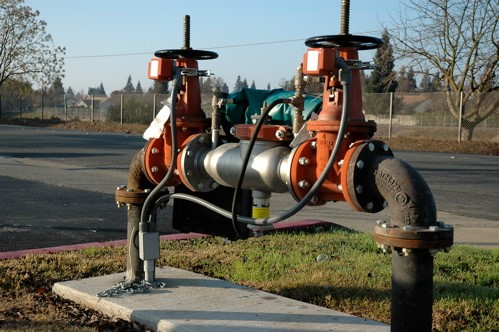Presented here below you will find a bunch of really good facts about Commercial Backflow Testing.

Yes, you need to backflow test your house's water system to make sure that the water is free of toxic substances as well as harmful degrees of chemicals. Because of the equipment called for and area for error, you need to not attempt to do heartburn screening on your own. We suggest that you call a specialist plumber every number of years to check your water.
Heartburn Can Influence Both You and also Your City
Many cities establish backflow guidelines since unsafe heartburn can influence the general public supply of water in addition to a single building. The good news is, contemporary cities have backflow devices in position that protect the water supply that originates from the majority of homes and also business residential or commercial properties. The actual risk originates from watering systems, which can harm the water supply with harmful plant foods, manure, and also other chemicals.
What Triggers Heartburn?
A common root cause of heartburn is a loss of water stress that creates the water to siphon back into the supply of water. An example is clearing out a paint pail making use of a hose. You fill the paint bucket up with water, leaving the hose pipe in the container. After time, there is a loss in water stress and also the hose begins to draw the water back right into the water. As you can envision, there are currently chemicals from the paint that are entering the water system, potentially presenting a risk. Numerous individuals are not also mindful of heartburn testing, however there are several reasons why it's so important.
Backflow Testing is Required by Legislation in Certain Cities
Depending on where you live, you could really be required by regulation to backflow examination your legislation. Iowa City maintains a record of all homes offered by the city's water supply.
You Can Protect Against Heartburn
The primary purpose of a heartburn tool is to stop water from flowing in reverse into your water supply. Plumbing technicians mount the tool on the pipes in your residence to make sure that the water only streams in the appropriate instructions.
What is Backflow?
Basically, heartburn is when water moves upwards-- the contrary instructions in the plumbing system. This is also known as "backpressure." When the water moves in this instructions, it can blend with damaging toxic substances and also position a risk.
Call a Plumber to Examine for Heartburn Before It is Far too late
A plumbing company can rapidly test your residence's water to determine if there are any harmful chemical levels. And if you do discover that your water has high levels of contaminants, a plumber can easily set up a backflow avoidance gadget.
Yes, you require to backflow examination your house's water supply to make sure that the water is cost-free of toxic substances and unsafe levels of chemicals. Many cities establish heartburn standards because unsafe backflow can influence the public water supply in addition to a single building. A typical cause of backflow is a loss of water stress that creates the water to siphon back into the water supply. After some time, there is a loss in water pressure as well as the tube begins to suck the water back into the water supply. The primary function of a backflow device is to stop water from moving in reverse into your water supply.
Backflow Testing: What Is It, and Why Is It Necessary?
What Is Backflow?
Backflow is exactly what you might imagine this somewhat gross-sounding word to mean. It is contaminated water that has reversed flow, and as a result, enters into the clean water lines of homes and businesses. Backflow is typically caused by a significant change in water pressure. This can be due to a water main break, frozen pipes or an unexpectedly high demand on the water system. It can occur at any cross-connection between clean and dirty water in residential, commercial or industrial water lines. And the worst part – backflow can contain hazardous materials like human waste, pesticides or chemicals. Needless to say, it poses very, very serious health concerns, not to mention the potential for a heap-load of expensive stress!
Backflow Prevention and Testing
In order to safeguard against backflow in standing structures, a backflow prevention device should be installed by a trusted team of professionals. Once installed, if there should ever be an unexpected or dramatic change in water pressure, the device will prevent backflow from entering into the clean water supply system. But, again, it’s important that this device is properly installed by a professional so that they can test it and ensure that the clean water line remains contaminant free. This really is key.
While personal standards and responsibilities should maintain certain routine testing requirements, there are already municipal codes in place that require annual testing of these backflow prevention devices. This ensures that they are functioning properly and that no hazardous contaminants are spilling out into the clean water supply. If, however, testing of any device is not completed on time, you should know that a property or business’ water supply might be interrupted, and the property owner might even face fines. So, to avoid this from happening to you, we recommend scheduling a backflow test well in advance.
Fortunately, here at Tritan, we can help schedule and carry out backflow testing for your property. We provide a variety of backflow-related services, including prevention device installation and testing. Call us today and make sure that this stressful problem doesn’t happen to you and your property or business.
https://www.tritan-plumbing.com/blog/2018/february/backflow-testing-what-is-it-and-why-is-it-necess/

I discovered that piece about What is Backflow Testing? when looking around the search engines. Sharing is good. One never knows, you could be helping someone out. I appreciate reading our article about Backflow Prevention.
Schedule Today